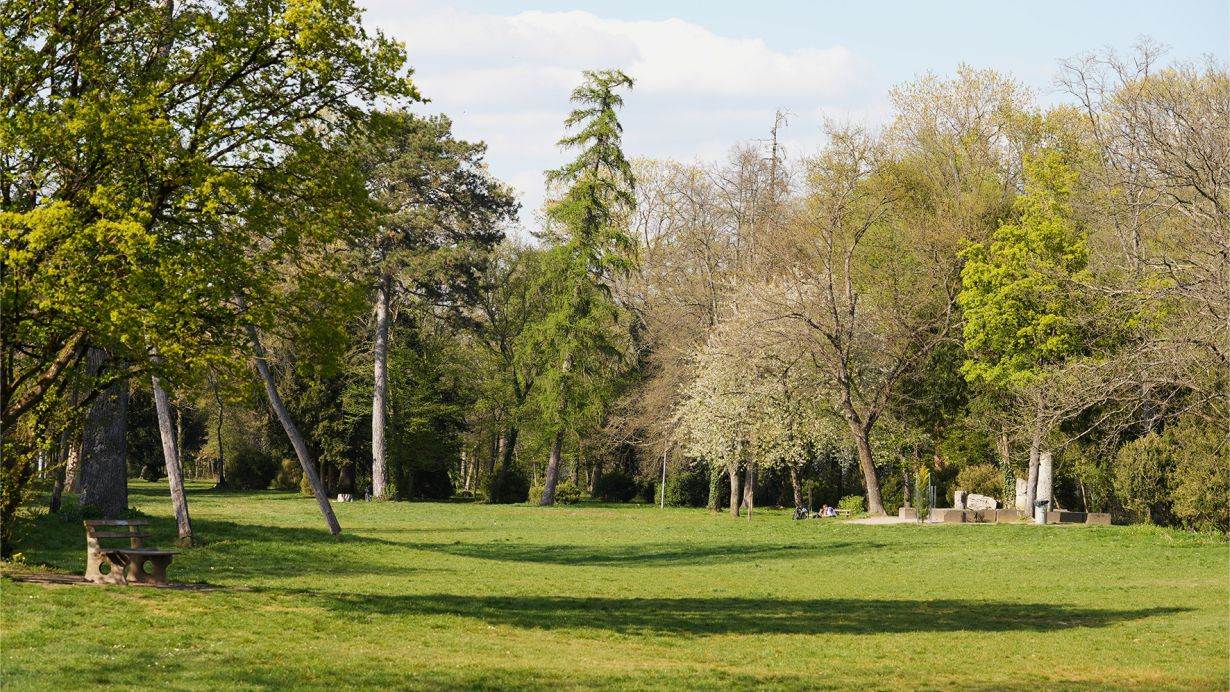
Green spaces play an important role for urban populations, whether by protecting against extreme weather events or providing space for recreation. In two studies, researchers at the Karlsruhe Institute of Technology (KIT) show just how much a diverse tree population affects microclimate, rainwater seepage and human well-being. Their results have been published in the journals Sustainable Cities and Society and Scientific Reports.
Green spaces with trees improve urban air quality and are important for leisure and recreation. In the FutureBioCity project coordinated by KIT, researchers investigated exactly how to design parks and other green spaces so that people feel especially comfortable there. "We wanted to understand how people choose public parks, and the what role the structure and composition of urban and peri-urban forests play in this choice by," said Dr. Somidh Saha, who led the study and heads a working group at ITAS, KIT's Institute for Technology Assessment and Systems Analysis. He noted that very little is known thus far about the significance of tree diversity. For its investigations, Saha's transdisciplinary team combined elements of ecological research with survey methods used in the social sciences.
Most of those surveyed said they felt most comfortable in places where, in their own assessment, the diversity was particularly high. "That shows that future parks should be designed to be as diverse and natural as possible so they appeal to people," Saha said. The researchers have not yet been able to determine whether there is a direct correlation between well-being and the observed diversity of tree species, so they plan to conduct further investigations.
Protection against Heat and Heavy Rainfall in Cities
Parks do not only exist for our comfort and enjoyment. Since cities are particularly affected by global warming, parks also play a key role in urban climate. In heavily built-up areas, heat islands can form and water cannot seep away after heavy rainfalls. In another recently completed project called GrüneLunge (green lung), Saha's research group analyzed how parks can promote rainwater seepage and heat mitigation in cities. "We investigated how much additional trees in cities can help to reduce flooding in extreme rainfall events by slowing down the draining water." The team also examined the extent to which trees can alleviate heat in cities.
The researchers analyzed rainwater drainage and heat generation in the city of Karlsruhe with the i-Tree HydroPlus climate model over a period of five years. They then simulated various urban greening scenarios and analyzed their effects on the microclimate and hydrology. "We can show that increasing the number of trees by at least 30 percent could reduce the number of hours per year of extreme heat by nearly 64 percent and the amount of runoff by 58 percent, so trees can strengthen resistance to heat and flooding, especially in districts with high building density," Saha said.
More Trees, Healthier People
The results of the two projects show that diverse green spaces with trees can improve human health in cities and mitigate the negative effects of climate change, especially in the case of the extreme heat waves and heavy rainfall events that are expected to occur with increasing frequency in the Upper Rhine region due to human-induced climate change. The projects were funded by the German Federal Ministry for Education and Research.
Original publication
Johanna Krischke, Angela Beckmann-Wübbelt, Rüdiger Glaser, Sayantan Dey, Somidh Saha: Relationship Between Urban Tree Diversity and Human Well-being and its Relevance to Urban Planning. Sustainable Cities and Society, 2025. DOI: 10.1016/j.scs.2025.106294
Rocco Pace, Theodore A. Endreny, Marco Ciolfi, Marcel Gangwisch, Somidh Saha, Nadine K. Ruehr, Rüdiger Grote: Mitigation potential of urban greening during heatwaves and stormwater events: a modeling study for Karlsruhe, Germany. Scientific Reports, 2025. DOI: 10.1038/s41598-025-89842-z
Being "The Research University in the Helmholtz Association", KIT creates and imparts knowledge for the society and the environment. It is the objective to make significant contributions to the global challenges in the fields of energy, mobility, and information. For this, about 10,000 employees cooperate in a broad range of disciplines in natural sciences, engineering sciences, economics, and the humanities and social sciences. KIT prepares its 22,800 students for responsible tasks in society, industry, and science by offering research-based study programs. Innovation efforts at KIT build a bridge between important scientific findings and their application for the benefit of society, economic prosperity, and the preservation of our natural basis of life. KIT is one of the German universities of excellence.






